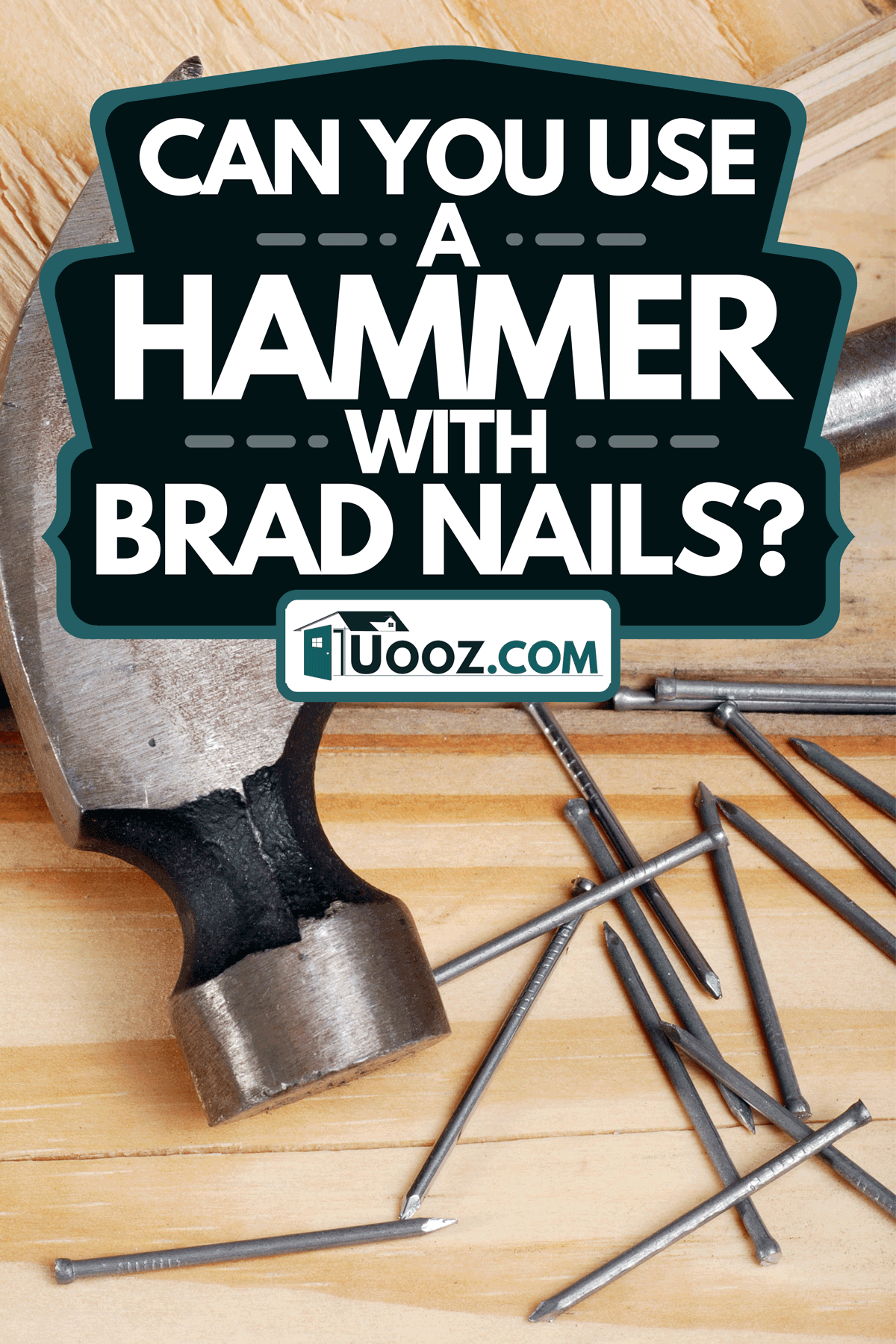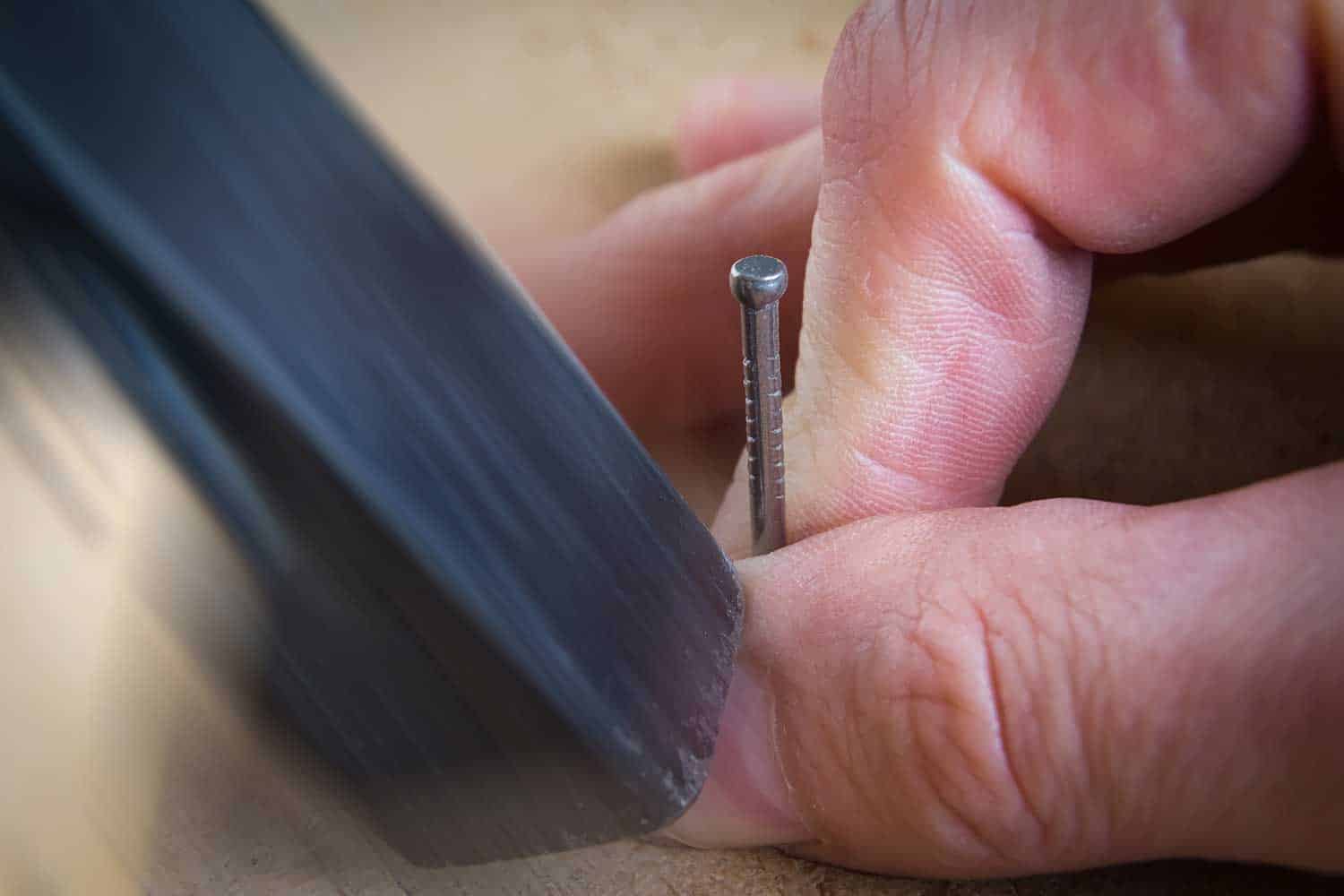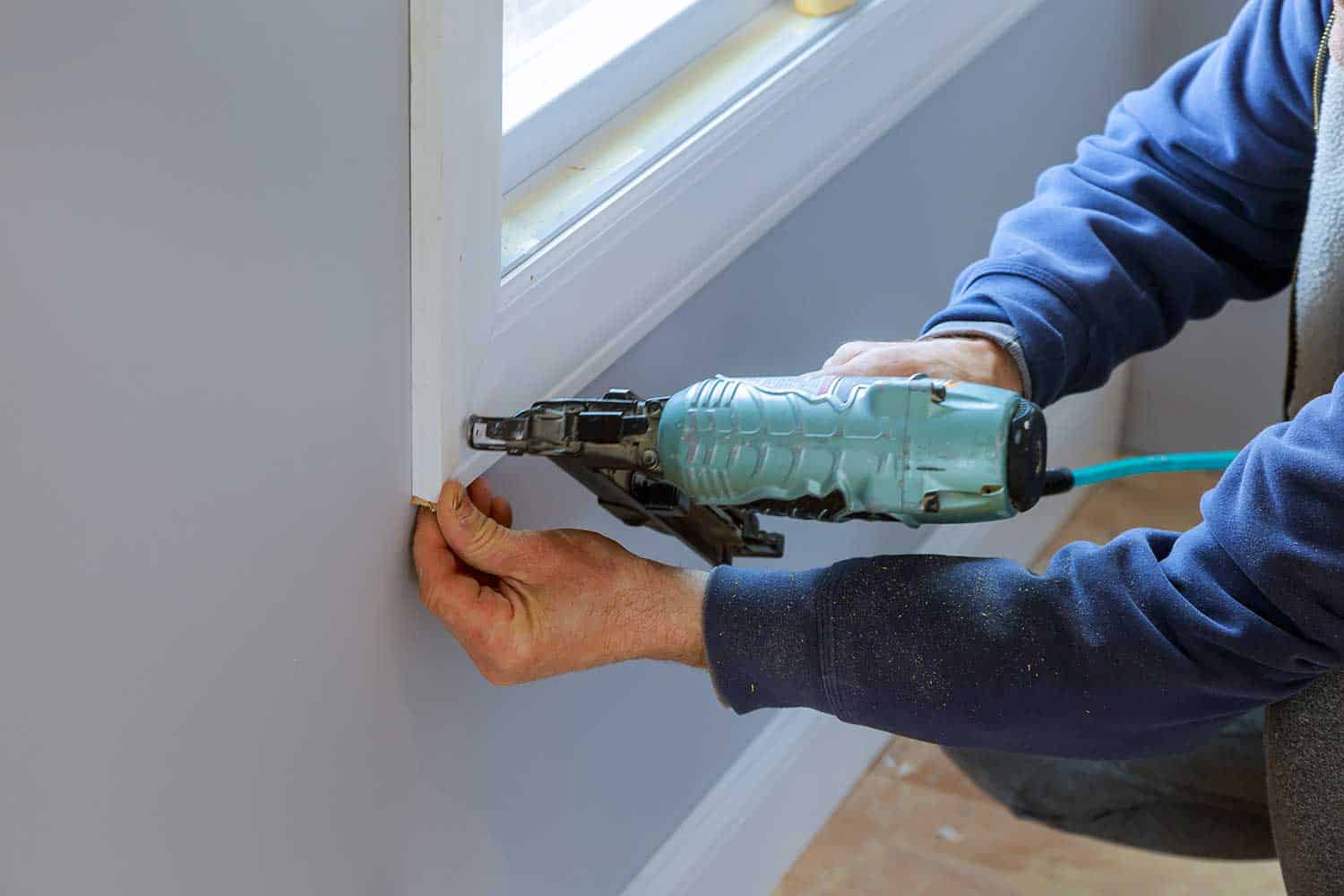If you're a new homeowner, you may not have many tools in your set yet. Your latest project requires brad nails - but all the directions and tips you see assume that you will be using a brad nailer. You don't have a power nailer and don't necessarily want to get one, but you need to get this done. It's a fairly obvious question then - can you use a hammer with brad nails?
Luckily, you can definitely use a hammer with brad nails! But there's also a reason many people prefer brad nailers. Hand nailing brad nails comes with a lot of challenges and is rarely the right solution. It's easy to scuff or damage the wood swinging a hammer, and it can be tough to use a hammer on brad nails. Options besides a brad nailer include:
- Adhesive or wood glue
- Staple gun
- Hand nailing
- Brad pusher
We'll cover everything you need to know about all four choices. We'll explain when glue works best when staples are an option and why just hand nailing doesn't always work (and why sometimes it does!) Plus, we'll explain all about a brad pusher, which is often the best solution. This article covers what it is, how it works, and when to use it. Finally, this article finishes by covering the times that you really do need a nail gun and what you need to know before you pick one.

What Can I Use If I Don't Have A Brad Nailer?
Maybe you don't have a brad nailer and don't feel like spending the money on a tool you need one time. Maybe you don't like power tools. In any case, there are definitely ways to put in brad nails without a power nailer.
Keep in mind that this is an open-ended guide - not every method will work with every material or on every project. For example, there's a big difference between piecing together a bench, putting up crown molding, or building a birdhouse. Be realistic about what your goal is when deciding which of these options can work best for you. You may need to combine more than one for the desired results.

Adhesive or Glue
You might be able to skip both the brad nailer and the nails! Adhesive or wood glue is definitely a possibility if you have the time to let it dry. This works best for very small pieces of wood.
In some cases, you might still need to add a couple of brad nails for extra support. Since this doesn't get the tight fit against the wood that a nailer does, you may also need to caulk the edges of the wood when you're done.
For additional information, you may need: Do You Glue Or Nail Crown Molding?
For an easy, efficient way to cover the wood, use a caulking gun to apply an adhesive like this one:
Click here to see this Loctite adhesive on Amazon.
Succeed With Staples
If you have access to a staple gun, consider whether or not they might be able to do the trick instead. Staples are a great alternative for things like furniture projects, where you're really trying to stick two pieces of wood together.
It isn't ideal when the staple is visible, though, like for finish work. It doesn't look attractive and leaves behind fairly large holes to cover. But if looks aren't important for whatever you're building, staples can be one of the fastest alternatives out there.
Nail It - By Hand
Hand nailing is possible with the right project and material. You can just carefully use a hammer to sink the brad nails close to the surface. Some materials may be too hard for brad nails, and you may find going with finishing nails is a better option.
You can learn more about that here: How Strong Are Brad Nails?
Pre-drilling holes first typically offer the best results, though this is a tip that really varies depending on your project. And keep in mind that hand nailing can split or ruin very delicate, thin pieces of wood. Trim made from MDF, for example, is very hard to nail by hand.
Don't push the nails in too far, as you risk marring your wood's surface with an overambitious or poorly aimed hammer strike. Work slowly and methodically - pieces tend to move with hand nailing, which is why some prefer using nailers. Then, finish countersinking with a nail set.
Click here to see this nail set on Amazon.
Use A Brad Pusher
Sometimes you have to use a brad nail. It can't be glue, or other finishing nails, or staples. You already know that using a hammer is going to be difficult or end badly. What you want is the results of a brad nailer; you don't have one.
Well, lucky for you, there is a tool that offers relatively similar results. It doesn't have the problems that hand nailing comes with, though it doesn't have the speed advantage of a real brad nailer, either. In some cases, you may need to caulk when you're done, as it doesn't get the wood quite as flush against the surface either. This tool is called a brad pusher.
What Is A Brad Pusher?
A brad pusher does exactly what it says - pushes the brad in. It doesn't save any time, as you still have to put each brad in by hand. But, unlike a hammer, you don't have to worry about missing or hitting too hard and marking up the surface.
Click here to see this brad pusher on Amazon.
The brad pusher has a small metal tube that holds the brad nail. The metal slides up and down, but there's a metal rod inside that remains stationary. When the tube holding the nail slides down, the metal rod pushes the nail into the wood.
It's a great method if you need to put just a few nails in, as it's relatively convenient and easy. It doesn't offer any of the speed of a nailer, however. This helpful video explains exactly how a brad pusher works:
When Should You Use A Nail Gun?
As much as people love their power tools, it's totally possible to avoid using a nail gun for many projects. Hand nailing is definitely possible, though you may find that you need to go with slightly bigger (and sturdier) finishing nails.
Sometimes, finishing nails may be too big, or hand nailing might risk splitting your wood's surface. In this case, using a brad pusher is ideal, though that does add one more tool you may need to buy.
The number one reason to go ahead and use a nail gun? When you have a lot of nailing to do! It's just faster, and you don't have to be quite so slow and steady, lining up each nail. When you're putting up the trim in three rooms, speed counts.

When you need a nail gun, keep in mind that you may not have to buy it if the price is what scares you. Consider renting the nailer from a local hardware store. Then again, nailers can be found fairly affordable these days - and new models don't always require air compressors anymore. It may be less of an investment than you think - and a worthwhile one.
Click here to see this battery-operated brad nailer on Amazon.
How Thick Will A Brad Nailer Work?
Each brad nailer is different, so always follow the directions of the manufacturer. But a brad nail is typically 18 gauge, and therefore, most brad nailers handle 18 gauge nails.
Some nailers may specify that they have other purposes. The label might call them something like multi-tacker, which can take nails of different sizes. Or some brad nailers do double duty as staple guns, as well. But unless there's a clear direction otherwise, it's safe to assume most brad nailers take 18 gauge brad nails alone.
As far as length, brad nails typically range from 1/2 inch to 2 and a 1/2 inches. This is another case where every nailer has its own design. Many nail guns max out at 2 inches, but finding ones that support the full 2 and 1/2 inches is possible.
In Closing
If you don't have a nail gun, there are other options. You can skip the brad nails with adhesive or staples. You can also install brad nails by hand or with a tool called a brad pusher. Brad pushers typically have the best results, as hand nailing brad nails into certain kinds of material can be difficult.
If you're going to be doing a lot of nailing, though, sometimes it's worth investing in a nailer. Battery-powered options are now available, eliminating the need for an air compressor to go with the nailer. And nothing is quite as fast or convenient as a nailing gun.




